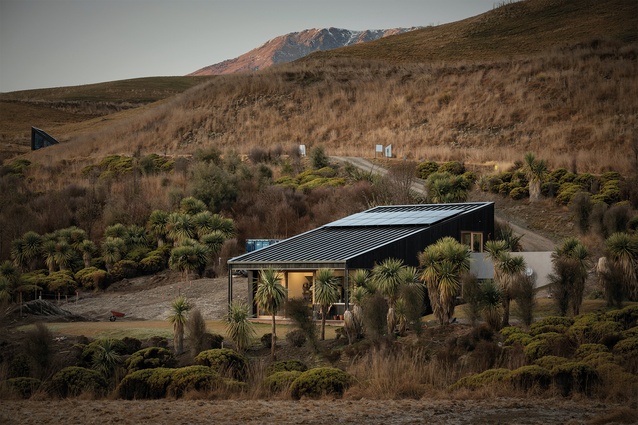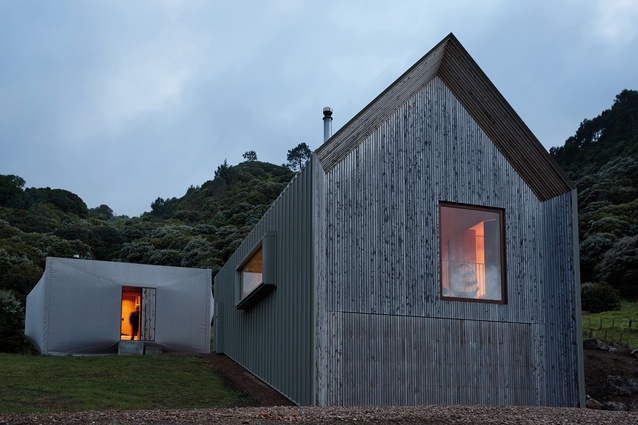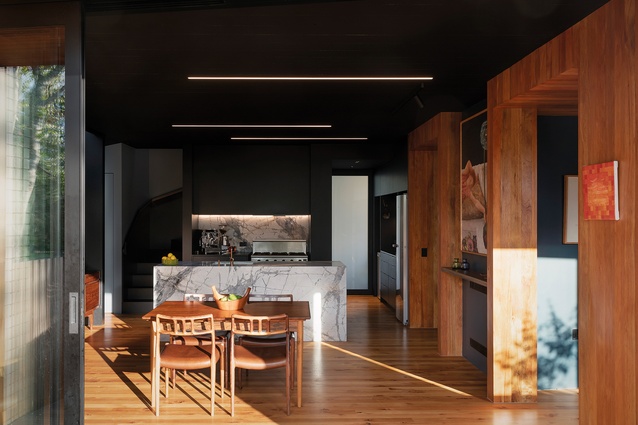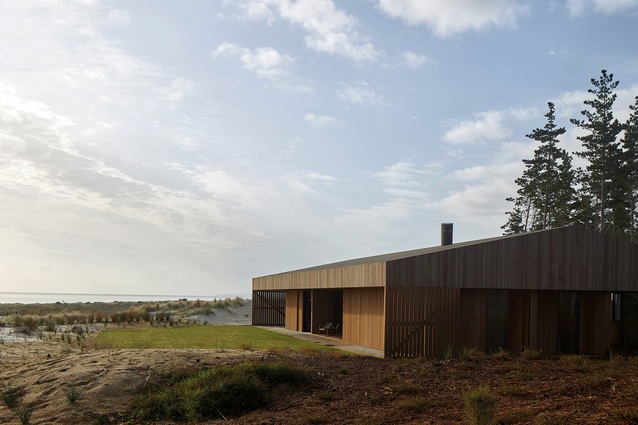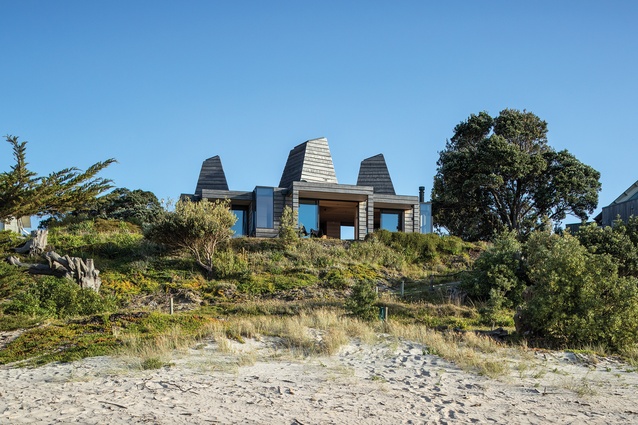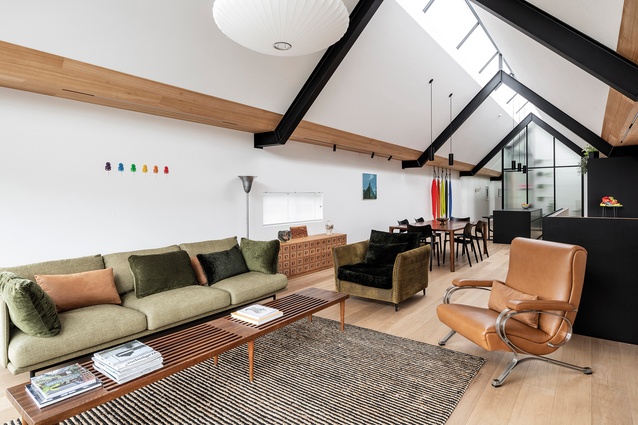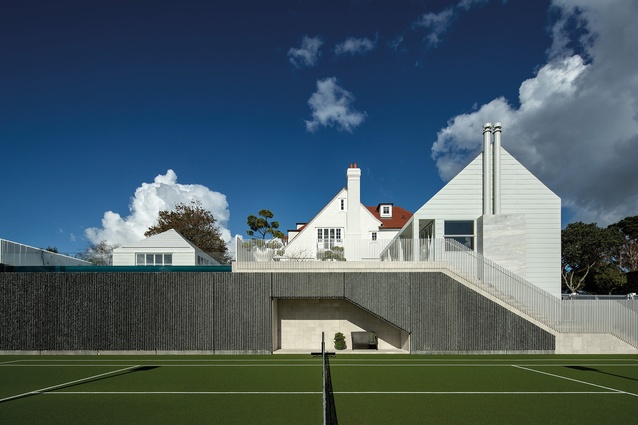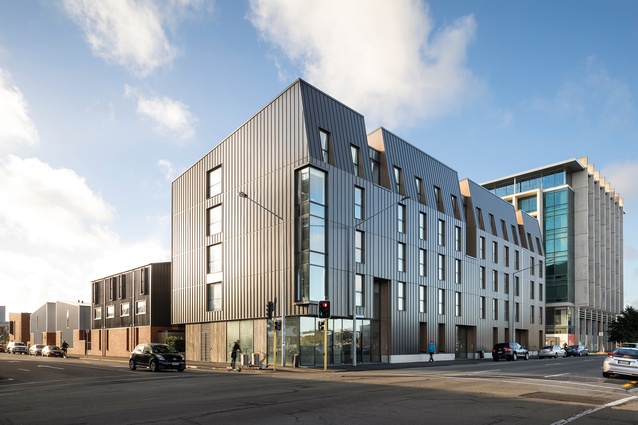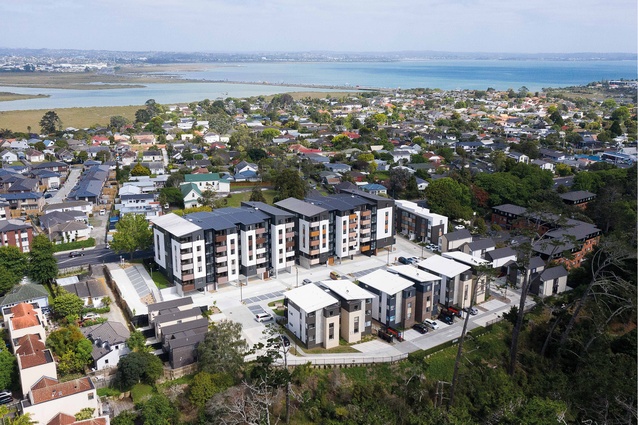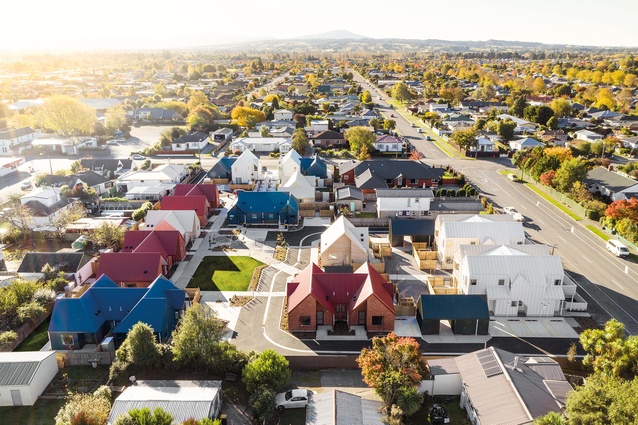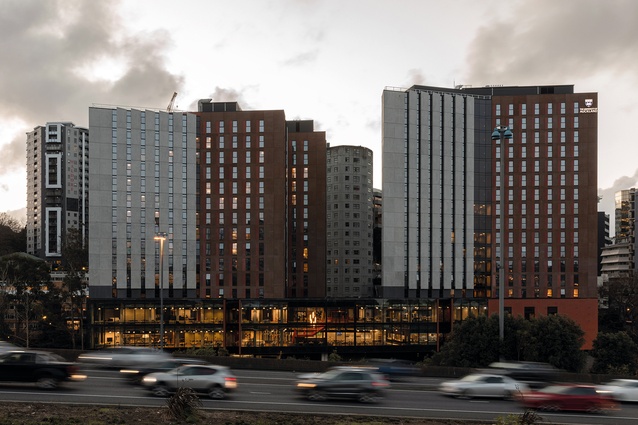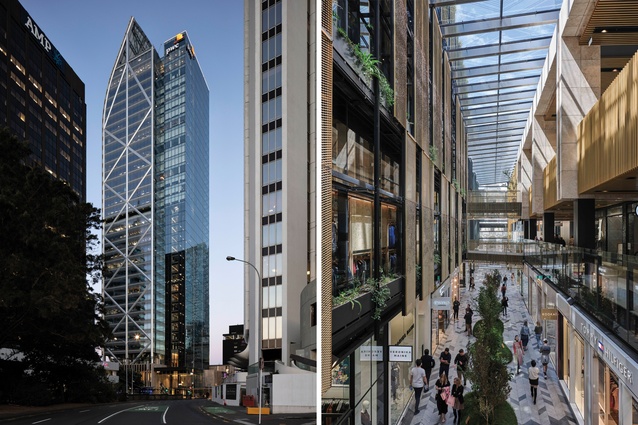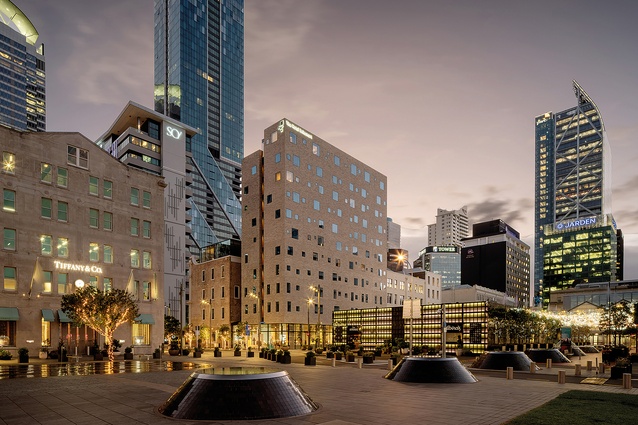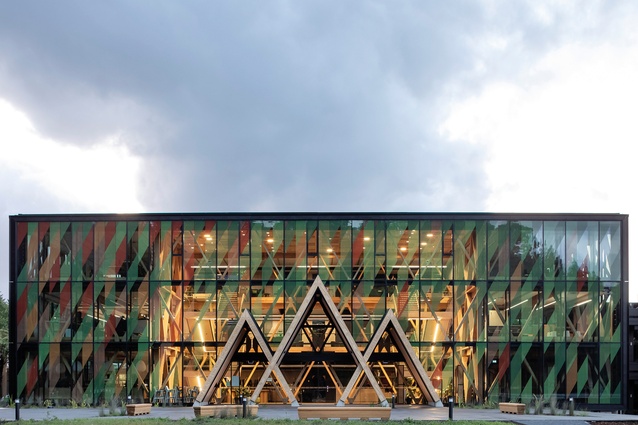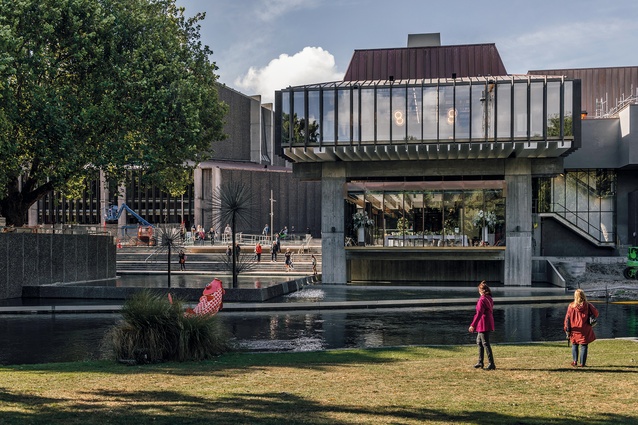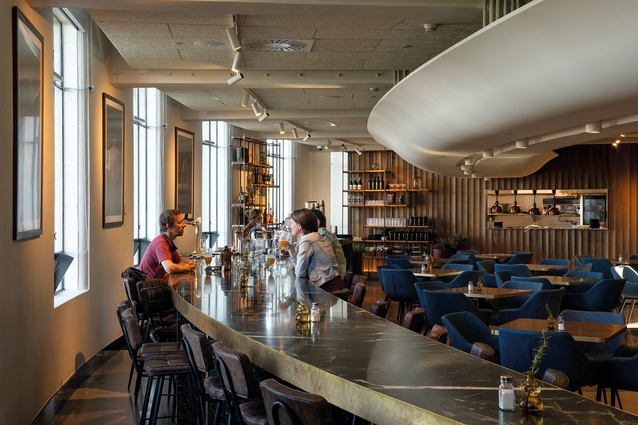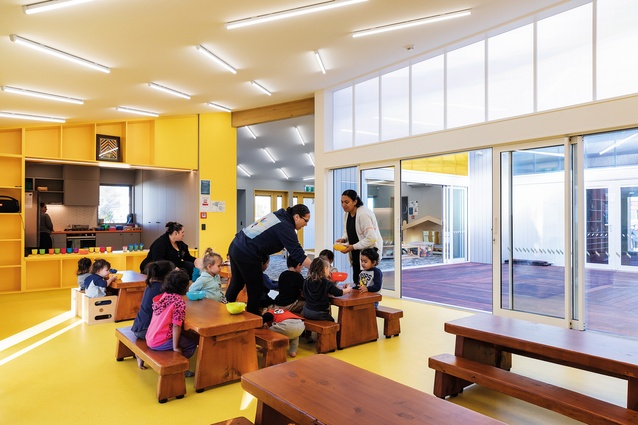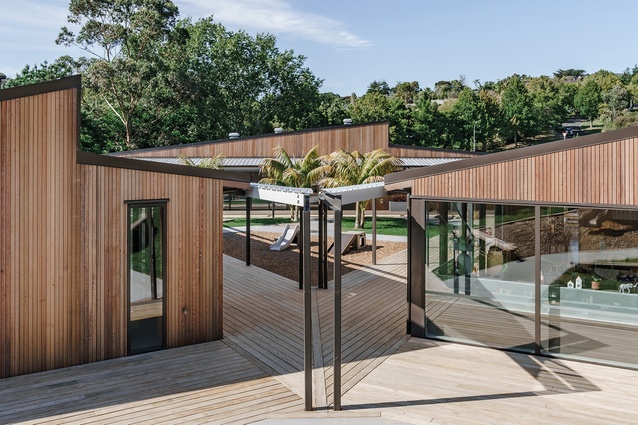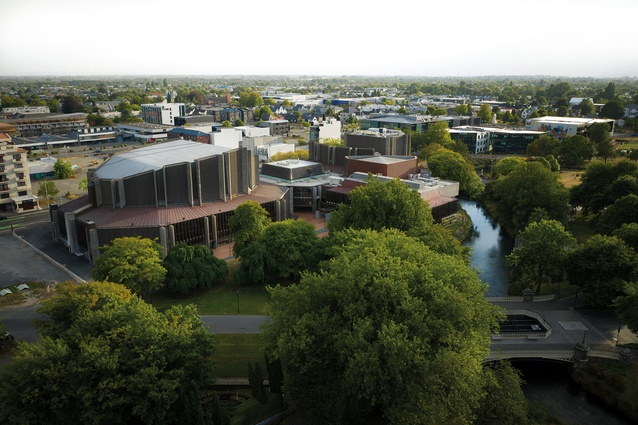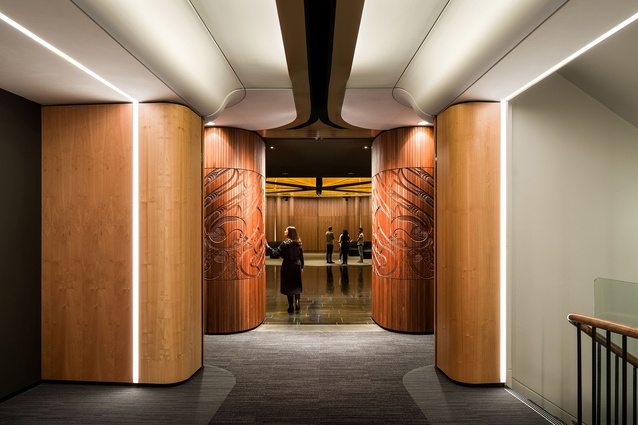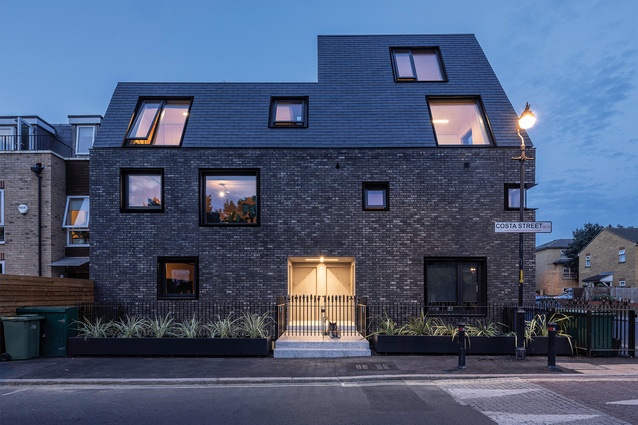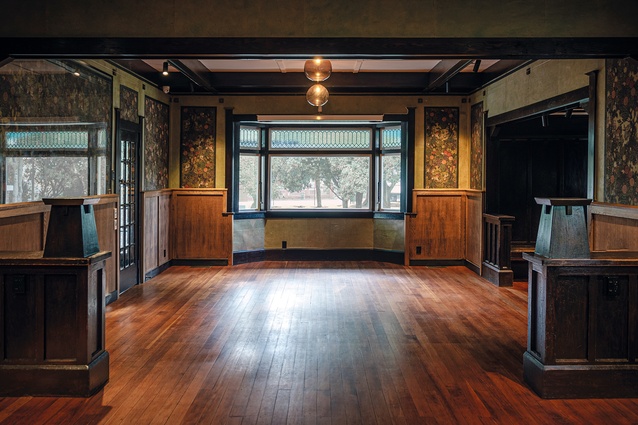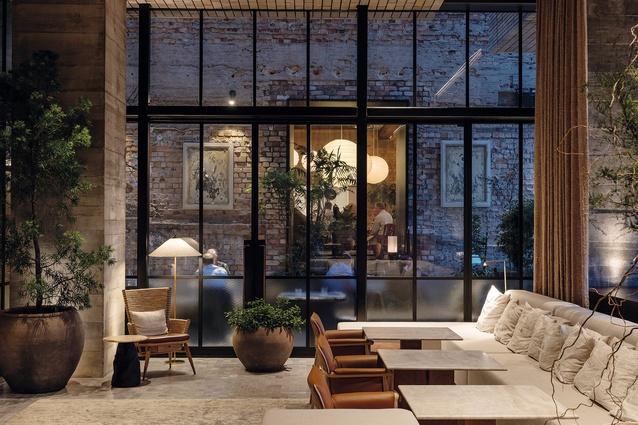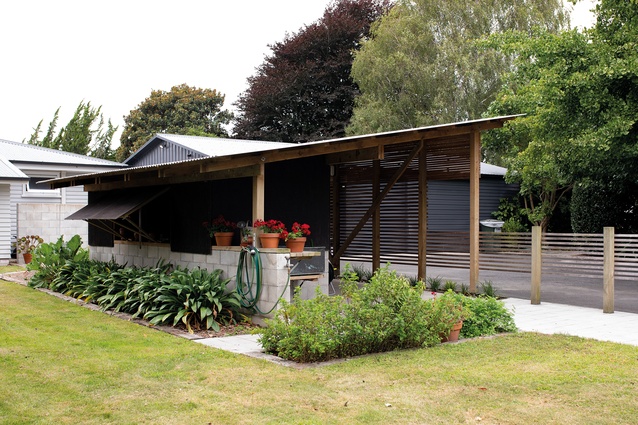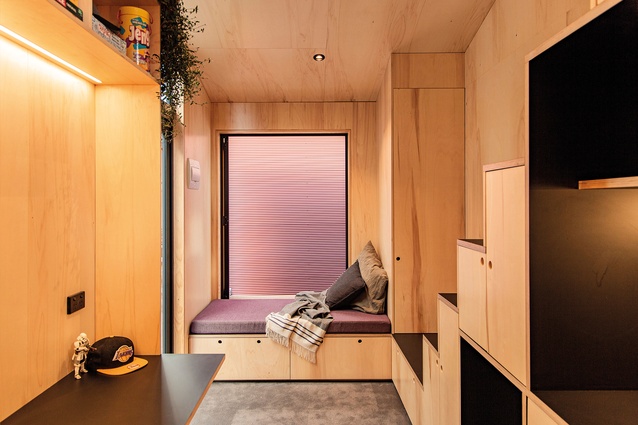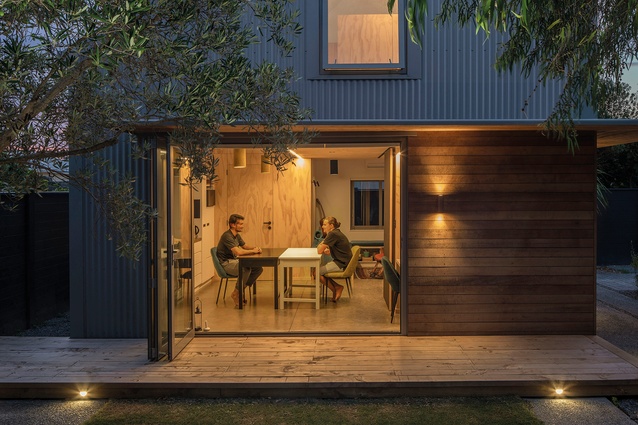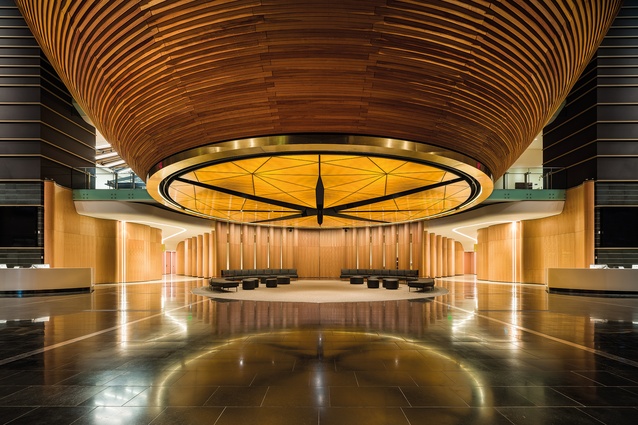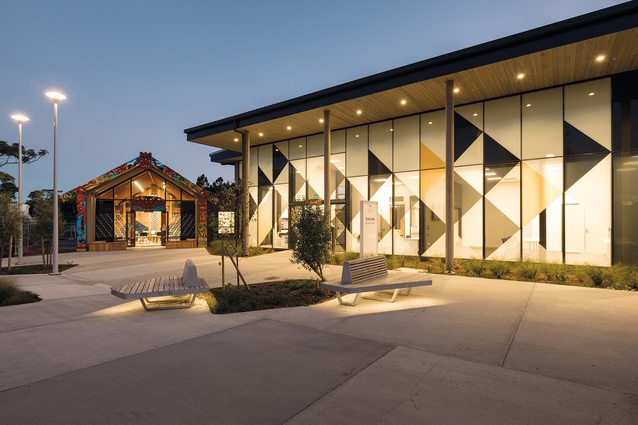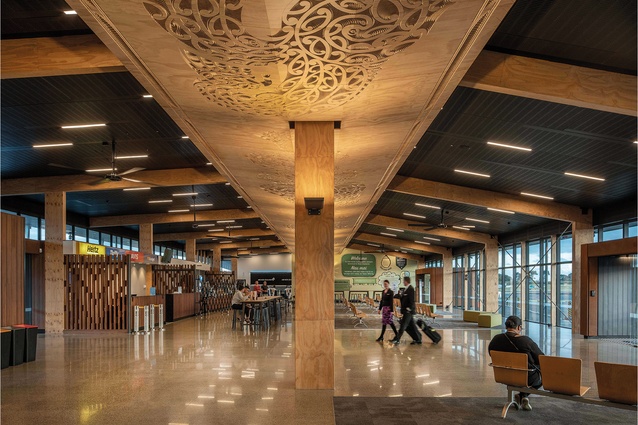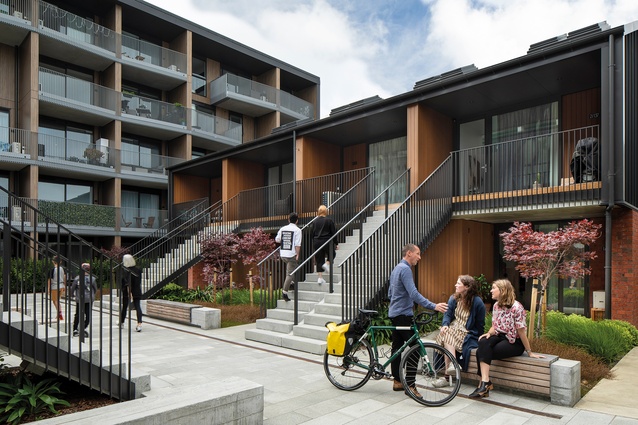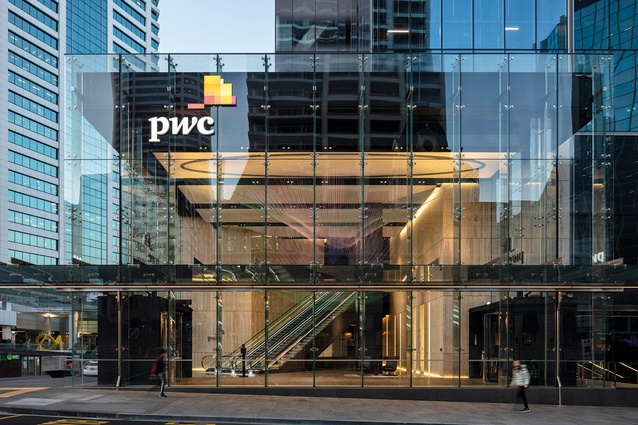Winners announced: 2021 New Zealand Architecture Awards
Te Kāhui Whaihanga New Zealand Institute of Architects (NZIA) has announced the winners of this year's New Zealand Architecture Awards.
The New Zealand Architecture Awards jury, led by Wellington architect Sharon Jansen and including fellow architects John Hardwick-Smith, Gary Lawson and Grant Edwards, gathered on a snowy Queenstown day in early August to begin making their way around Aotearoa. The plan was to visit 52 projects across 15 towns and cities. Luckily, they had already completed 10 days of their tour when the emergence of the Covid-19 Delta variant in the community plunged the entire country into lockdown. The five remaining site visits, in Auckland, were made ‘virtually’ in late October. The final four awards, or named awards, will be announced on Thursday 9 December.
Convenor Sharon Jansen said: “This year, we saw many excellent entries in the Housing – Multi-Unit category, which is significant as our property market changes and adapts to new residential living models. In this time of urgent need for housing across the spectrum of our society, we found ourselves needing to break our own rules by adding a fourth winner to this category, where two vying for a place were inseparable.”
She also remarked: “In the Housing category, we look to celebrate what it is that makes a good home, regardless of budget or size. With these winners, we recognise that excellent design in housing is not only about a beautiful photograph, but also about space, thermal performance, functionality and connections to place.”
COMMERCIAL ARCHITECTURE AWARDS:
Commercial Bay by Warren and Mahoney, Woods Bagot and NH Architecture in association
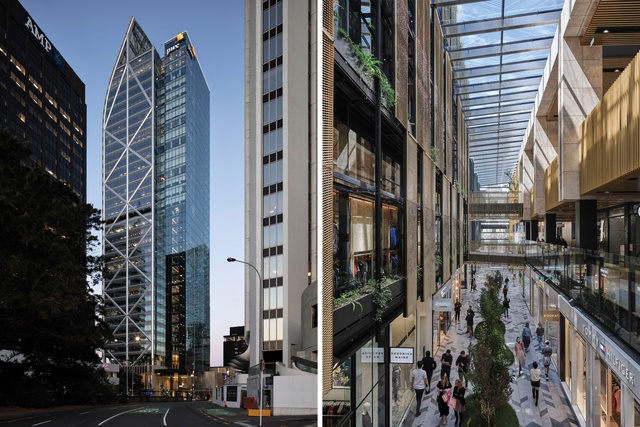
Judges said: ”Design excellence is revealed in this ambitious project, which creates a transformational destination in downtown Auckland. From the generous and luxurious Sky Lobby to the Green- Star-rated tower and the re-imagining of an entire city block, Commercial Bay achieves a remarkable level of sophistication and design richness. Providing connections to multiple transport networks, and negotiating the challenge of accommodating tunnels for the under-construction City Rail Link, this project of epic proportions is testament to the excellence of its design team and is a precinct for Tāmaki Makaurau that is truly worth celebrating.”
The Hotel Britomart by Cheshire Architects
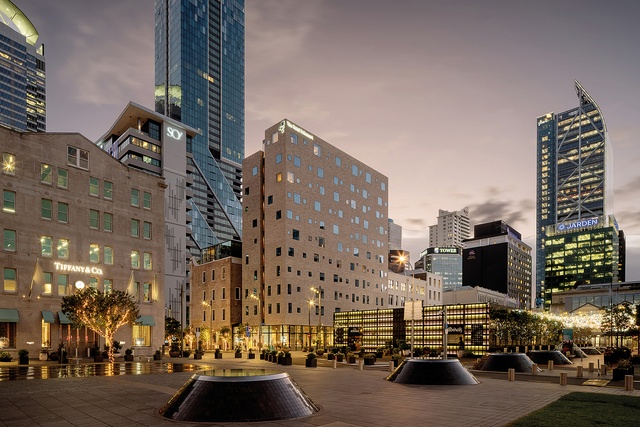
Judges said: “A successful new addition to the cityscape of Tāmaki Makaurau, the Hotel Britomart interfaces gracefully with adjacent heritage architecture, creating intricate spatial experiences for those who move through this building and the laneway it creates. Beautifully planned and executed, the hotel is a place of discovery and delight – from the architects’ reinvention of the hotel room into something clever and unusual yet luxurious, to the seamless integration of its thoughtful exterior with a rich and sumptuous materiality within. This is New Zealand’s first 5 Green Star rated hotel; the commitment and passion of client, contractor and architects to design excellence and sustainability through concept, execution and delivery has resulted in an outstanding building for Tāmaki Makaurau.”
SCION Innovation Hub Te Whare Nui o Tuteata by RTA Studio and Irving Smith Architects
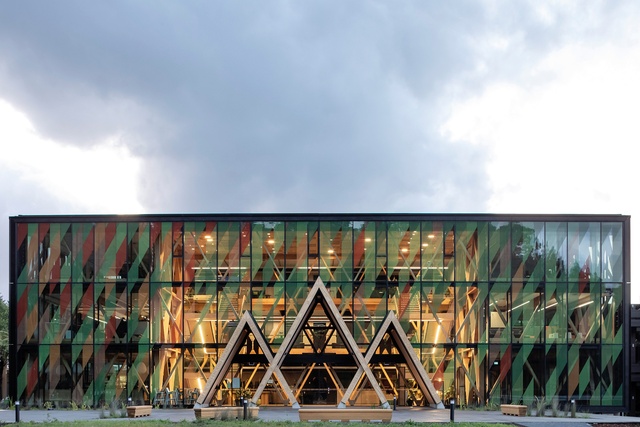
Judges said: ”In creating this striking new public interface and showcase for timber technology, the architects have successfully embraced their client’s desire to maximise the use of wood, resulting in benchmark-setting innovation. Formed as a patterned glass box façade that references the adjacent Whakarewarewa Forest canopy, and layered over an articulated timber framework to deliver dappled light into the interior, the generous open core of this Crown research building shapes an interconnected structure with a welcoming heart. Extensive use of sustainably grown, local timber has enabled the building to achieve net-zero embodied carbon emissions, creating a blueprint for the future of timber construction.”
ENDURING ARCHITECTURE AWARD:
Christchurch Town Hall (1972) by Warren and Mahoney
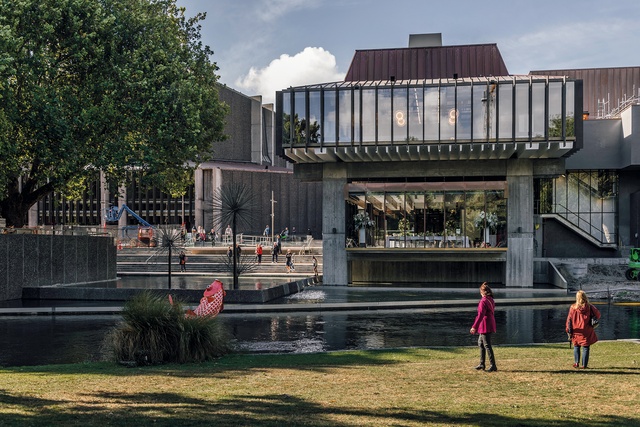
Judges said: “How could architects so young design with such vision? This project is testament to the very rare skills of Sir Miles Warren and Maurice Mahoney (both 35 at the time), and acoustician Sir Harold Marshall (33), and the ways in which they combined their abilities to create a masterpiece of national and international significance. Rugged, robust, refined and delicate, this architecture is one of contrast and contradiction that harmonises into a jaw-dropping effect. From carpet colours to door handles, and from lampshades to acoustic baffles, nothing was left to accident and nothing could be better. The Christchurch Town Hall has truly endured, and risen again to take its rightful place in the canon of New Zealand architecture.”
HOSPITALITY ARCHITECTURE AWARD:
Tuitui by Jack McKinney Architects
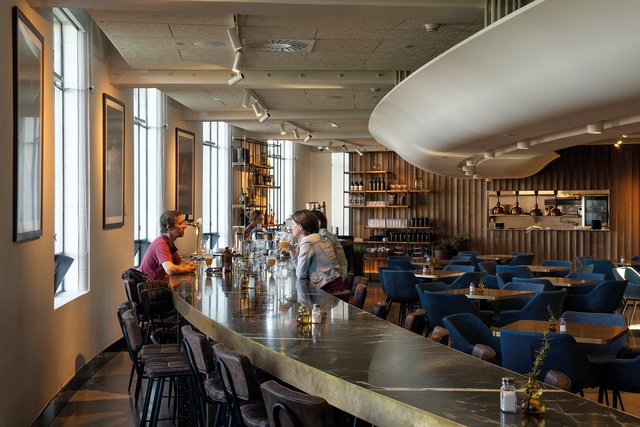
Judges said: “Sometimes simple is best, as is the case with this perfectly executed insertion into Tāmaki Paenga Hira Auckland War Memorial Museum. With details that are both sweet and robust, and a back-of-house space creatively shoehorned around a heritage structure, the front-of-house area has been maximised in a manner that is contemporary, chic and intriguing. As a centrepiece of this bistro and café, a long, curved, green marble counter is at once a spatial organiser, social prompt and service zone. With his use of sculpted concave forms that brilliantly echo the fluted columns of their neoclassical museum backdrop, the architect has skilfully deployed heft, colour, texture and form – with subtle nods to 1950s’ diners – to create a wonderful environment in which to dine.”
EDUCATION ARCHITECTURE AWARDS:
Te Hohepa Kōhanga Reo by Bull O’Sullivan Architecture
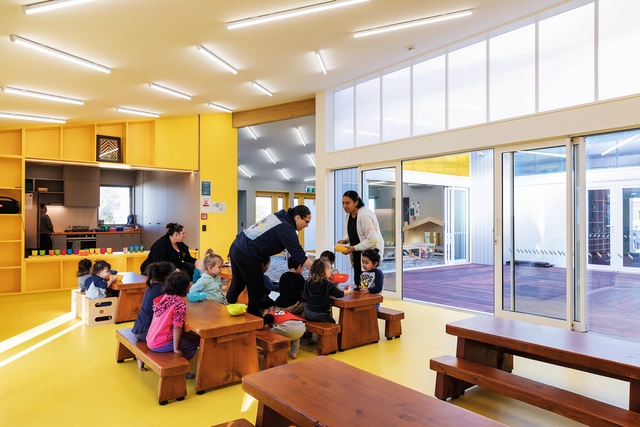
Judges said: “A hip roof over a nine-square plan forms the foundational narrative of this small Kōhanga Reo in urban Ōtautahi Christchurch. The internally orientated building uses a central square as the rā courtyard – a sheltered and light-filled gathering space that provides a semi-outdoor play area during the cold Canterbury winters. Adjacent learning spaces radiate from this central point in the manner of a star, which is the colourful tohu (symbol) used to underpin the centre’s kaupapa. Beautifully scaled with niches that create a secondary layer of child-sized spaces within the main rooms, this elegant, well-crafted building is full of colour, energy, interconnectedness and aroha, and weaves tikanga and tradition into the lives of its young users.”
New Shoots Early Childhood Education Centre by Copeland Associates Architects
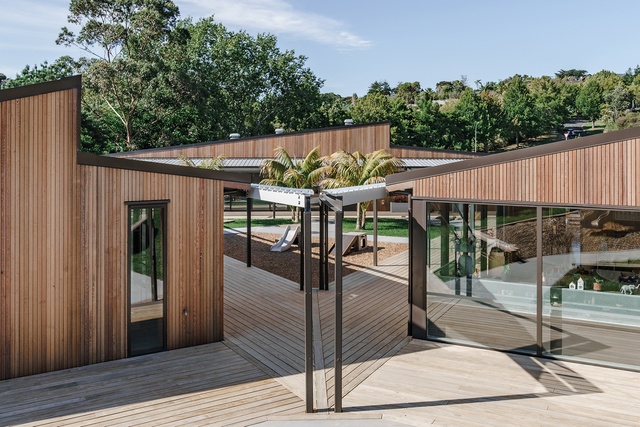
Judges said: “With this innovative project, the architects have transformed a marginal and contaminated site near a motorway into a tranquil sanctuary for a brand-new preschool. A gentle and considered sequence of entry via a footbridge over a restored wetland provides a delightful sense of arrival at a protected triangular courtyard formed by three pavilions. Designed as ‘nature classrooms’, these pavilions are naturally ventilated and situated to take advantage of sun and light, while their cross-laminated timber interiors and soft colour palette create a calming connection to the surrounding mature trees. New Shoots is a rich spatial experience and a magical, nurturing environment for children.”
HERITAGE ARCHITECTURE AWARDS:
Christchurch Town Hall by Warren and Mahoney
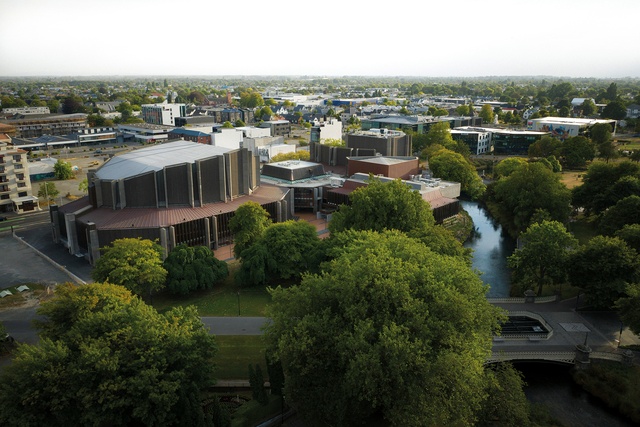
Judges said: “With their work barely visible in parts, yet still confident and bold, the architects have successfully restored this iconic piece of Christchurch. One of the very best examples of the city’s brutalist style, this landmark building was nearly lost to demolition in the aftermath of the February 2011 earthquake. The team involved in the reconstruction, restoration and refurbishment of the town hall have shown respect and integrity in their handling of such a sensitive project. By finding appropriate ways to add substantial additional space and making the necessary accessibility, safety and technological upgrades, the architects have shown that the vision and skill of this town hall’s original designers lives on.”
Auckland War Memorial Museum Tāmaki Paenga Hira – Te Ao Mārama and Cenotaph Galleries by Jasmax, FJMT, DesignTRIBE and Salmond Reed
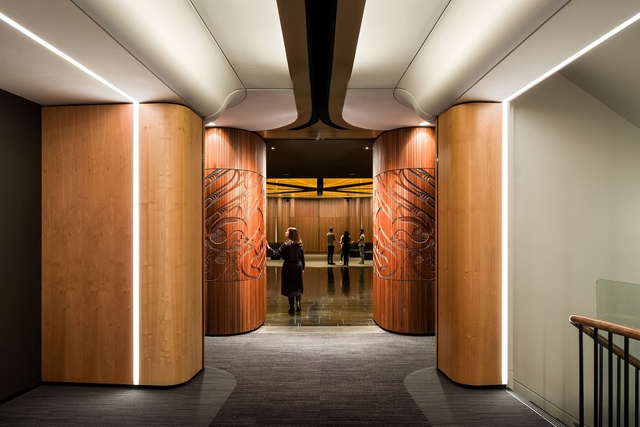
Judges said: “This exemplary project threads a series of bold new architectural elements and integrated artworks through the existing layers of Tāmaki Paenga Hira Auckland War Memorial Museum, transforming it into a cohesive entity fit for its multicultural future. A new entry sequence from the south creates an epic civic greeting and orientation space within the South Atrium. New spaces and linkages have been elegantly designed to connect rooms and navigate between existing layers of heritage fabric. Rich materiality, local timbers, sculpted forms and diverse narratives reinforce cultural connections, and strongly ground the building in its unique place.”
INTERNATIONAL ARCHITECTURE AWARD:
Costa Street (London) by What_Architecture
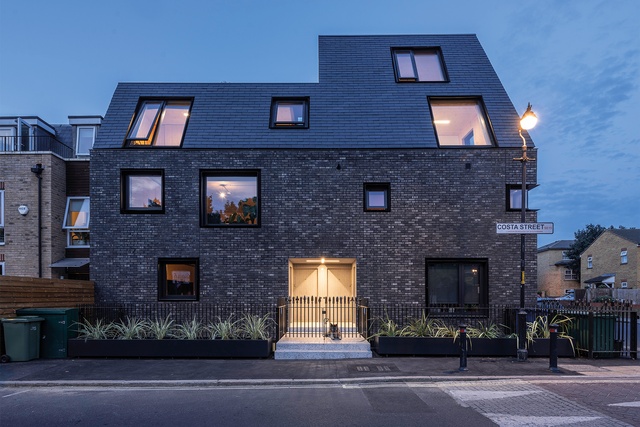
Judges said: “… in the heart of South London’s Peckham stands this build-to-rent block of houses by a Māori architect, who also filled the roles of developer and contractor. The leaning mansard, a play on the predominant neighbourhood roof type, presents a dramatic profile that also interacts with the protected mature trees and greenery behind. Four unique rental houses are tightly interwoven within the building’s four levels, and each has its own independent street access, outdoor space and varied aspect via punched openings. Structured with digitally cut cross-laminated timber, this project challenges planning, material, development and construction norms to provide high-quality, affordable, sustainable rental housing… that could inform our architectural thinking here in Aotearoa.”
INTERIOR ARCHITECTURE AWARDS:
Whare Koa Māngare Community House by Burgess Treep & Knight Architects
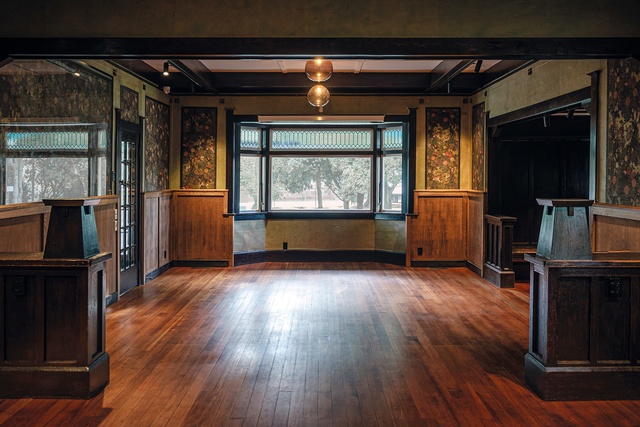
Judges said: “As one of Auckland Council’s most heavily used community facilities, Whare Koa needed upgrading to meet demand in a manner that was respectful to the Cook Island community it serves. Through subtle changes to its plan and the introduction of light into service spaces, the architects have transformed this bungalow’s functionality while graciously preserving its interior – including the restoration of original wallpaper and the use of high-quality fittings and finishes. By embracing the bungalow’s dark nucleus, and juxtaposing it with the vibrant colours of the Pacific, the architects have created a rich, culturally responsive interior where rooms glow with a vibrancy further enriched by the people who use them.”
The Hotel Britomart by Cheshire Architects
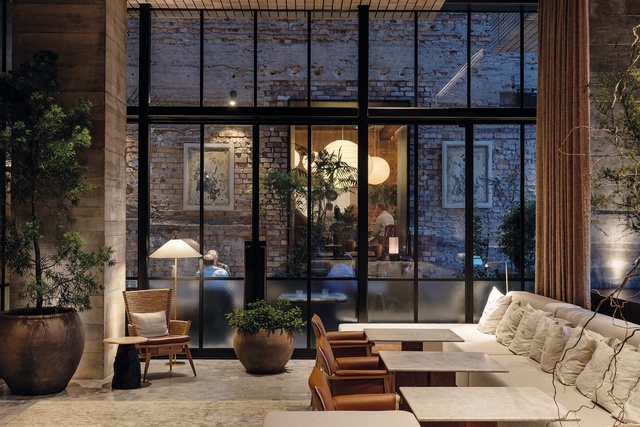
Judges said: “From reception to room, the Hotel Britomart does everything differently. At street level, the threshold between light-filled lobby and public pavement is barely visible. Pockets of seating within create links with adjacent restaurants and the architects have taken cues from neighbouring heritage buildings to weave together old and new elegantly. On the upper floors, dark, muted colours of glass-ended corridors create a mysterious and shadowy journey to the hotel’s ingeniously arranged rooms, which reorder the usual placement of sleeping space and bathroom. With a material palette that relates strongly to place through locally sourced products and crafted fittings, the hotel has a textural and sumptuous interior.”
HOUSING AWARDS:
Awaawaroa by Cheshire Architects
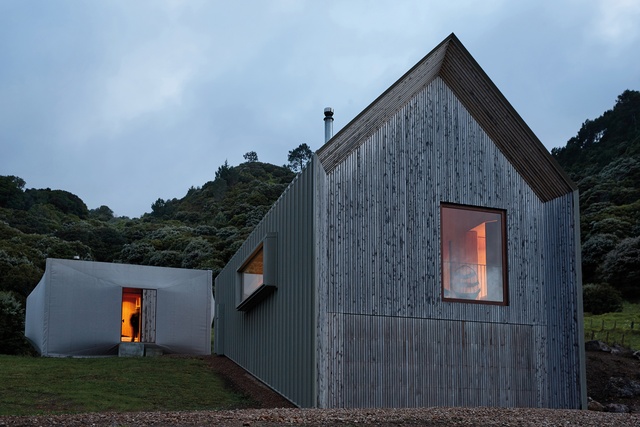
Judges said: “Efficiency and economy are balanced with opulence in this delightfully crafted house set amid a raw Waiheke Island landscape. A trio of structures facilitates an informal-yet-intricate sequence of experiences that open up a rich dialogue between built form and landscape. Deep-set openings frame the views and the main pavilion itself acts like an architectural periscope. Inside, intimate and sumptuous interiors have been carefully thought through, and arrival thresholds, areas for cooking, bathing and working occupy the spaces between the inner and outer skins. The main pavilion’s living space unfurls seamlessly out to a central courtyard and two canvas-clad bedroom pods, each with its own aspect and outlook, loosely contain this exterior space. Together, these deceptively simple pavilions form an off-the-grid encampment and well-loved home for the owners.”
Threepwood Passive House by Team Green Architects
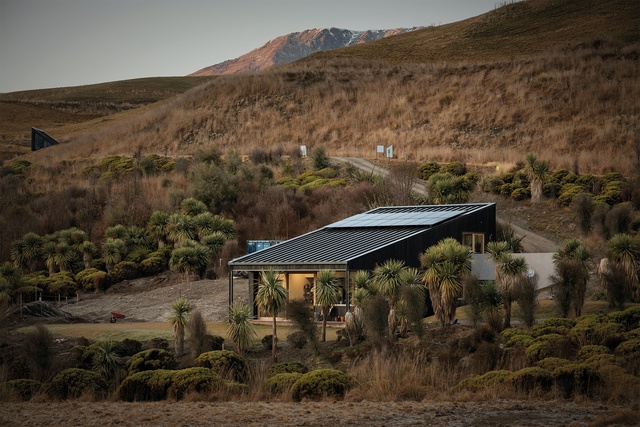
Judges said: “Threepwood Passive House is a small, well-proportioned and robust family home that rests lightly amid its beautiful South Island surroundings. Its bold and simple form mimics the slope of the land while, inside, two levels connected by a ladder and tiny playroom create flexible spaces for work and living. Through clever and compact planning, the functionality of entry, kitchen and laundry are merged, and generous volumes make living areas feel spacious and light. Outside, a wide, north-facing verandah provides essential shading and beautifully framed views that hold meaning for the home-owners. A certified Passive House Plus with an 8 Homestar rating, this relaxed home full of warmth and delight is a strong example of how responsible and sustainable design can be used to create delightful living environments.”
Our House by Studio/LWA
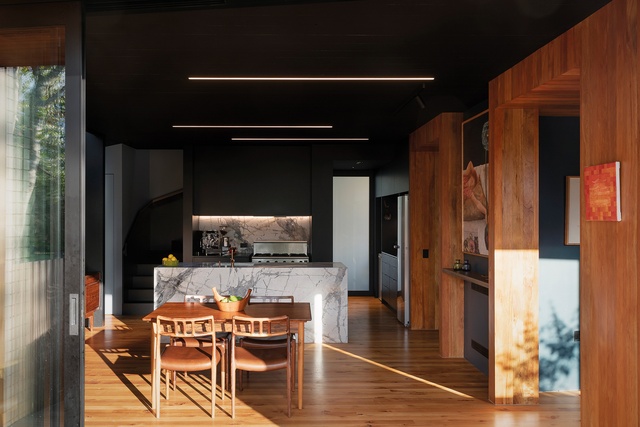
Judges said: “This modest, contemporary bungalow built on a subdivided front lawn on the ‘wrong side of the street’ is an inspirational window into what the future of Auckland could look like. Considerate of its surroundings and honestly grappling with multiple layers of local body rules and covenants, Our House has been designed with minute attention to detail and not a single inch is wasted. From the road, subtle folds and shifts in the wall and façade gently reinterpret expectations of suburban frontage, drawing from and contributing to the local streetscape. Inside, deceptively simple volumes cleverly overlap and interconnect, each with a sense of generosity beyond its compact dimensions.”
Te Arai by Fearon Hay Architects
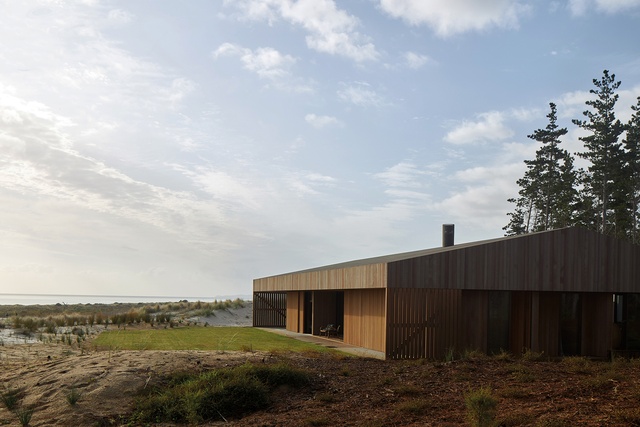
Judges said: “Conceived as a pair of big sheds sitting alongside the sand dunes, this large family getaway is testament to an architect–client relationship that has resulted in a beautiful, serene encampment. Here, sumptuous and elegant materials and details appear simple and effortless, undoubtedly in contrast to the huge effort and care this stunning project demonstrates. The natural flow of the spaces into one another offers connection balanced with appropriate separation, all the while maintaining wonderful engagement with the outside and its stunning vistas. Design elements that encourage relaxation – built-in seating, sheltered verandahs, sunscreens and fireplaces – are beautifully crafted and generously proportioned, combining to create a calm and luxurious beachside environment.”
Light Mine by Crosson Architects
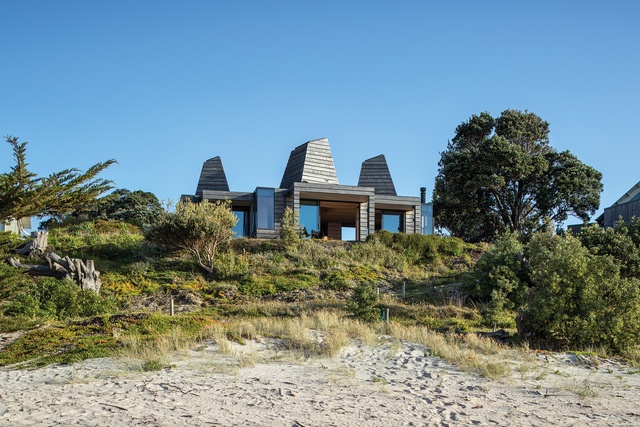
Judges said: “Meandering arrival paths lead you to a trio of pavilions that distil the essence of seaside living. Leveraging the most from the site’s topography and mature trees, Light Mine’s relaxed arrangement of forms provides seclusion, peace and privacy. Deceptively casual planning provides a flexibility of habitation that could easily cater for two or for the entire extended family. The use of timber on Light Mine’s strong, sculptural exterior – which references the history of mining in the area – has been expertly detailed by the architect and beautifully crafted by the owner, a builder. The result is a restful-yet-exciting retreat, thoughtfully tailored to its location.”
HOUSING – ALTERATIONS AND ADDITIONS AWARDS:
Oxford Terrace by Dalman Architects
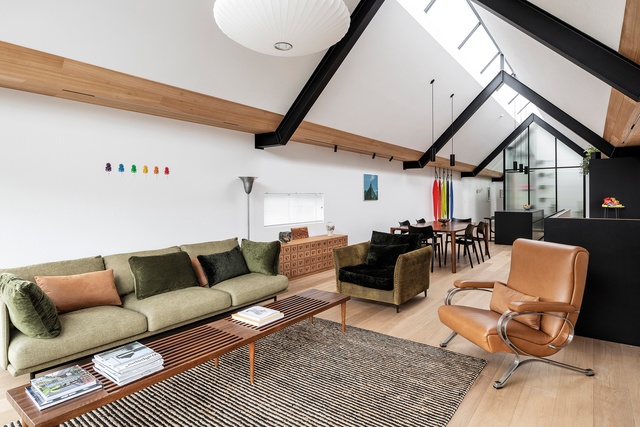
Judges said: “This former Trengrove & Blunt office building designed in the late 1970s has been lovingly and meticulously restored and repurposed as an inner-city home and studio. The proportions of the original riverfront elevation have been honoured while a beautiful and refined new architecture of textures, elements and artwork has been layered into the building. The architect (who once worked in the building), in collaboration with the owners, has created a beautiful inner-city home within this carefully revived and transformed icon on the Christchurch riverfront.”
Recrafted Art House by Crosson Architects
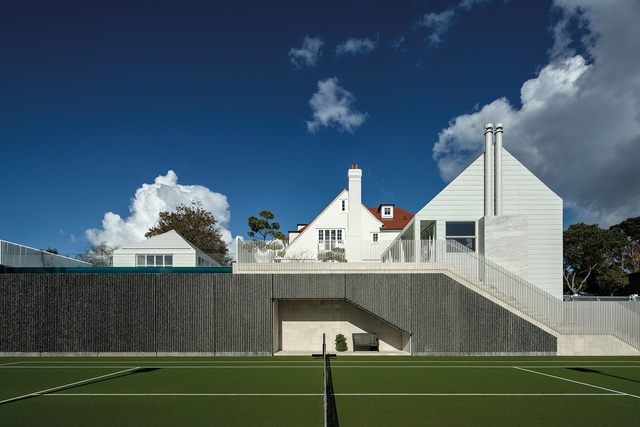
Judges said: “Bold and explorative in its essence, Recrafted Art House is an example of architects taking an inventive approach to preserving and extending the life of an important historic residence. A new pavilion of slick, white metal harmonises with the substantial existing elements of this arts and crafts mansion in a manner that is consistent, immaculate and beautiful. Deft touches and luxury detailing have been used to create both sympathetic harmony and striking contrast, and the project is finished both inside and out with a level of care and attention that the original architects, Bamford & Pierce, would undoubtedly marvel at.”
HOUSING - MULTI UNIT AWARDS:
One Central – Bedford Apartments and Bedford Terraces by Architectus
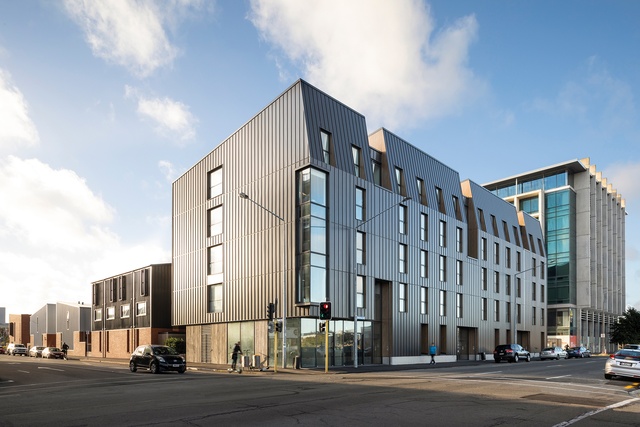
Judges said: “This diverse and dynamic housing precinct contains a range of typologies that are rigorously and tightly planned. Central pedestrian courtyards and lanes create a people-orientated neighbourhood that encourages integration and engagement between residents while carefully managing privacy. A modulation of form breaks the scale of this precinct, while brick and metal cladding materials are a nod to the industrial heritage of its site. Providing protection from Christchurch’s prevailing north-easterly, a taller apartment form is orientated to provide living and balcony spaces that soak up the afternoon sun. All units benefit from dual aspect, and necessary service areas and bike storage spaces are well considered and integrated.”
Kāinga Ora - Waterview Court by Ashton Mitchell
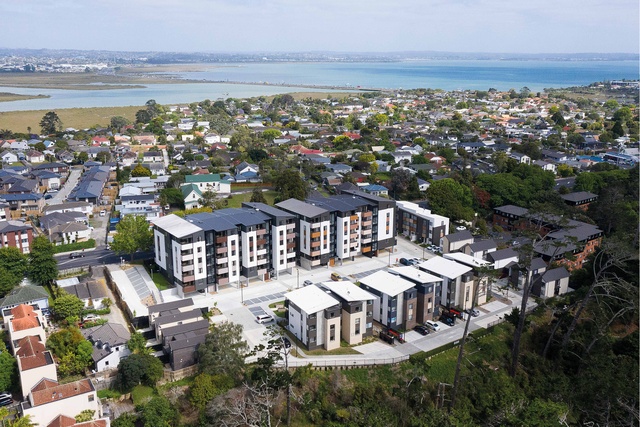
Judges said: “Densely massed along busy Great North Road, Waterview Court provides a group of 120 striking and memorable homes. Utilising shadow, depth and colour to create interest, the five-storey block of road-facing apartments constructed of pre-cast concrete is robust and durable, and generates a high-quality streetscape that will stand the test of time. Away from the road and encircled by housing of differing scales, a generous green space and play area creates a safe, engaging heart and a unique sense of place for the residents of this social housing complex. Through careful planning, all residents benefit from naturally light-filled homes with considered window placement and deck spaces. Kāinga Ora’s collaboration with architects, iwi, community groups and contractors has driven a diverse and integrated living outcome that must be admired.”
Kāinga Ora – Social Housing Redevelopment by Rohan Collett Architects
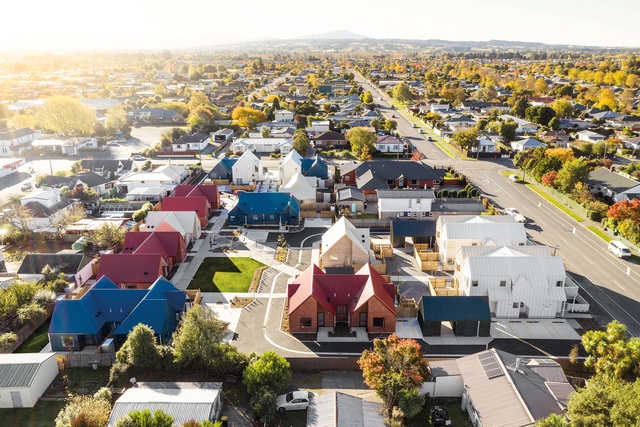
Judges said: “Addressing an urgent need to house single occupants in low-rise, suburban Rangiora, this social housing development creates an accessible and welcoming enclave of homes. With a nod to Warren and Mahoney’s Christchurch flats of the 1960s, the architects have carefully created clusters of two-, three- and four-unit groups that appear as individual homes with familiar gable roof forms. Thoughtfully proportioned and planned, the 28-residence development has integrated accessible ramps into its landscaping, with paths, roads and small outdoor spaces creating a sense of home, sociability, safety and community. Built with low-maintenance brick and precoated metal, this quality urban environment provides a strong model for the future provision of state housing in Aotearoa.”
Waipārūrū Hall by Warren and Mahoney
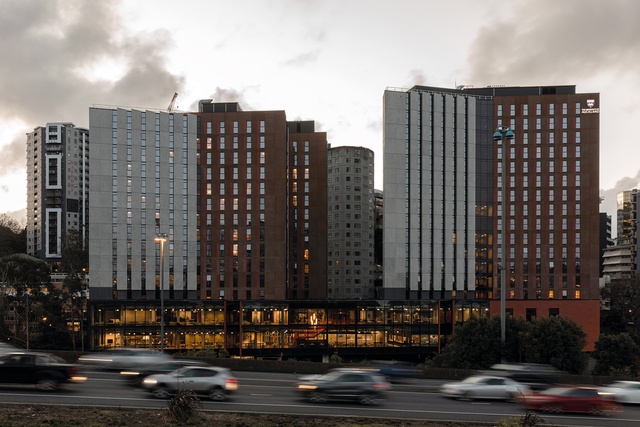
Judges said: “Within a crowded precinct of student halls of residence, this pair of attractive, nuanced towers, poised between city’s edge and motorway, stand tall and apart. Thoughtfully created to foster a sense of community, generous spaces offer large dining areas, smaller group study and meeting places, and private study spaces, which are arranged over a two-storey podium. Highly glazed, this podium allows views into and out of this busy and vibrant student community. Central common spaces on each floor help to foster connection and a sense of belonging, making Waipārūrū Hall an exemplar of the way student wellbeing can be nurtured and enhanced by quality architecture.”
SMALL PROJECT ARCHITECTURE AWARDS:
Elegant Sheds by Common Space
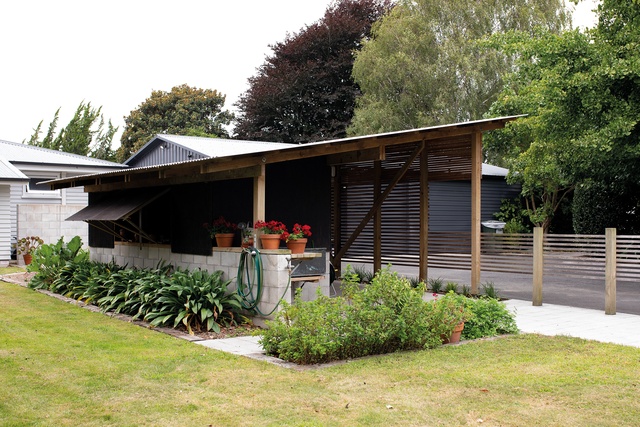
Judges said: “The simple brief for a carport, clothesline and garden shed has been thoughtfully resolved into a collection of forms that brings delight and convenience to everyday tasks. Large overhangs, slatted screens, hinged window awnings and seats add a generosity to utilitarian functions, and the architect’s skilful use of everyday materials, such as concrete block and treated pine, give a tip of the hat to architects Julie Stout and the late David Mitchell, as the project’s name suggests. A superb demonstration of the architect’s ability to bring joy to the most basic, but important, of structures, this is indeed an elegant shed.”
My Whare by Strachan Group Architects
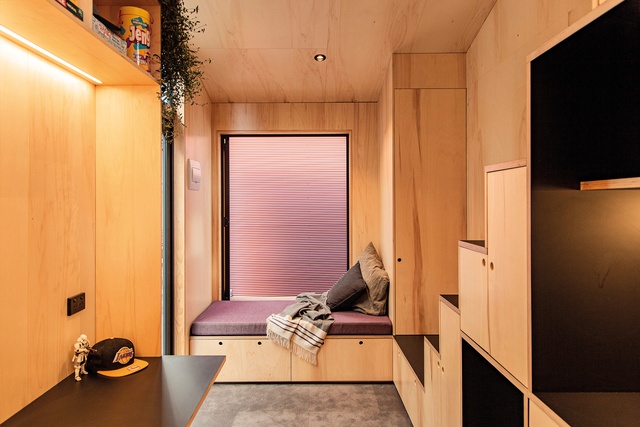
Judges said: “In response to the crisis of youth homelessness, these well-executed, transportable buildings provide rangatahi with the opportunity for a brighter future. Designed to be transported onto the property of a host family, the My Whare builds help facilitate care and connection alongside independence, as their inhabitants transition out of state care or homelessness. By approaching this project with care and thoughtfulness, the architect has created aspirational and exquisite spaces that demonstrate the role the profession should play in creating a built environment for our most vulnerable people.”
The Cube by First Light Studio
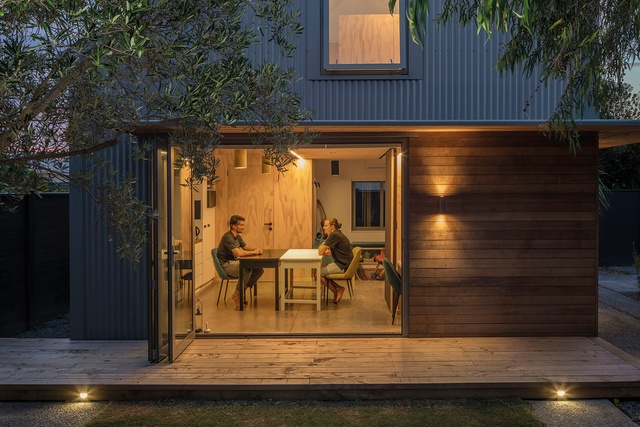
Judges said: “On the 6x6-metre footprint of a former garage, this backyard infill home for downsizers complements and draws from a 112-year-old main villa on a suburban Petone site. With its cleverly worked diagonal plan, The Cube provides surprisingly loose-fit volumes for personalised living and working across two zones, that each extend out under a slim canopy of steel and recycled timber to adjacent gardens. This deceptively simple and well-loved little house has a spatial complexity and generosity well beyond its humble dimensions and budget, and provides an excellent and timely precedent for densification and multi-generational living on suburban sites.”
PUBLIC ARCHITECTURE AWARDS:
Auckland War Memorial Museum Tāmaki Paenga Hira – Te Ao Mārama and Cenotaph Galleries by Jasmax, FJMT, DesignTRIBE and Salmond Reed
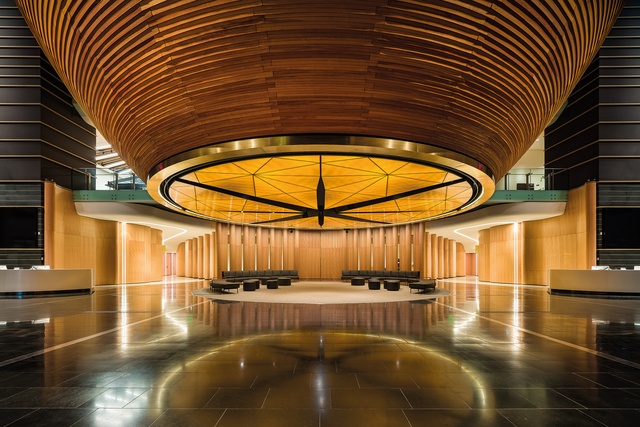
Judges said: “Through diverse and responsive stakeholder engagement, and respectful intervention with heritage, this collaborative team has created critical new connections and facilitated improved accessibility to Tāmaki Paenga Hira Auckland War Memorial Museum. A new entry sequence welcomes visitors through carved fins into Te Ao Mārama, the South Atrium, and new pathways navigate visitors through the building. Rich materiality, local timbers and sculpted forms with diverse narratives connect old with new, reinforcing cultural connections, and strongly grounding the building in its unique place.”
Tiaho Mai Acute Mental Health Inpatient Unit, Middlemore Hospital by Klein
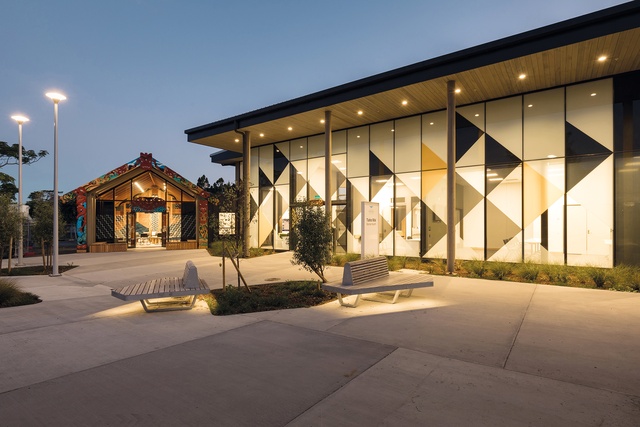
Judges said: “Tiaho Mai represents a new model of care where a focus on health, wellness, whānau and community are at the heart of recovery for people requiring acute-level mental health care. As a result of extensive research and collaboration with the district health board, the architects have structured this building around seven courtyards and light-wells, inverting the traditional hub-and-spoke design. Social spaces and open-air courtyards are accessible from light-filled corridors, and cross views allow staff to observe from a respectful distance. Tiaho Mai proves that good architecture can help enable the delivery of mental health care that is uplifting and respectful of the people who access it, as well as their whānau and staff.”
Gisborne Airport by Tennent Brown Architects and Architects 44 in association
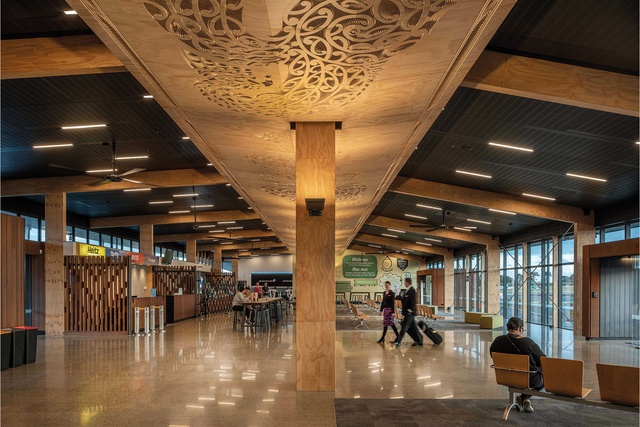
Judges said: “A well-functioning regional airport with a grounded sense of belonging, this simple structure has been embraced as a community building by, and for, the people of Tairāwhiti. Suggesting both the whare and the waka, the terminal’s form and folded roof are elegantly structured. The rich interior is anchored by a patterned tāhuhu (ridge pole) at its spine, alongside toi whakairo (carvings) that embody a sense of well-being and welcome. In developing Gisborne Airport, the architects have complied with rigorous Living Building Challenge requirements, while their deep commitment to material research and project delivery has realised a sustainable, bicultural building that reflects the mana of mana whenua and provides a fitting gateway to Tairāwhiti.”
PLANNING AND URBAN DESIGN AWARDS:
One Central – Bedford Apartments and Bedford Terraces by Architectus
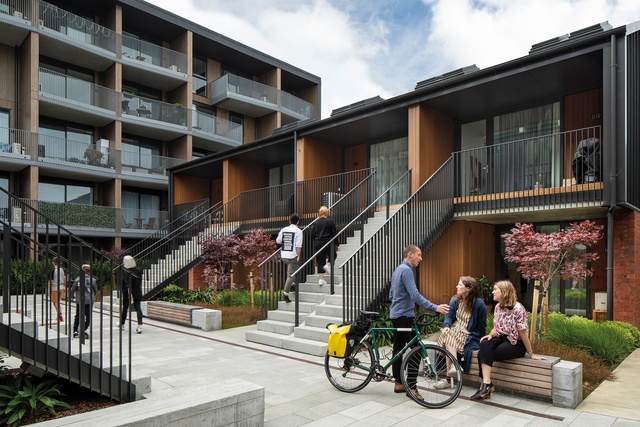
Judges said: “Bordered by two busy roads and an open public space, this housing precinct is an exemplary response to its context, providing people-focused inner-city living designed for young professionals and families. Car parking on a side lane allows for the arrangement of buildings around two central courtyards, which, alongside an urban pedestrian lane, create quiet pockets of shared space to encourage strong community engagement. At the precinct’s eastern perimeter, a taller apartment block provides a buffer from the impact of a busy main road, protection from prevailing wind and passive surveillance of internal public spaces from west-facing living and balcony areas. The rigorous and tight planning of these 6 Homestar rated one-, two- and three-bedroom units has resulted in a well-considered and resolved addition of 94 homes to the housing stock of Ōtautahi Christchurch.”
Commercial Bay by Warren and Mahoney, Woods Bagot and NH Architecture in association
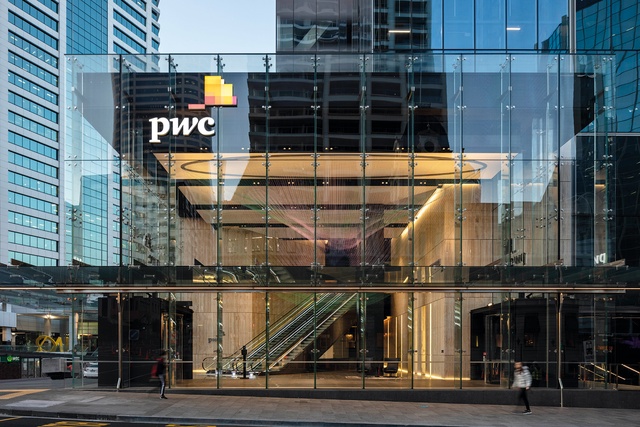
Judges said: “The transformation of an entire city block on a pivotal downtown site has been expertly handled to create an engaging urban experience. By successfully opening up the project’s centre with laneways that form connections and reinforce linkages to the wider site context, the architects have crafted a public space that is an extension of the urban fabric beyond its threshold. Connections to multiple transport networks – including bus, rail and ferry – have been integrated and tunnels for the underground City Rail Link are accommodated beneath. This is a project that seeks to represent Auckland’s unique identity with skill and care, and that triumphantly enriches the city far beyond the boundaries of its site.”

